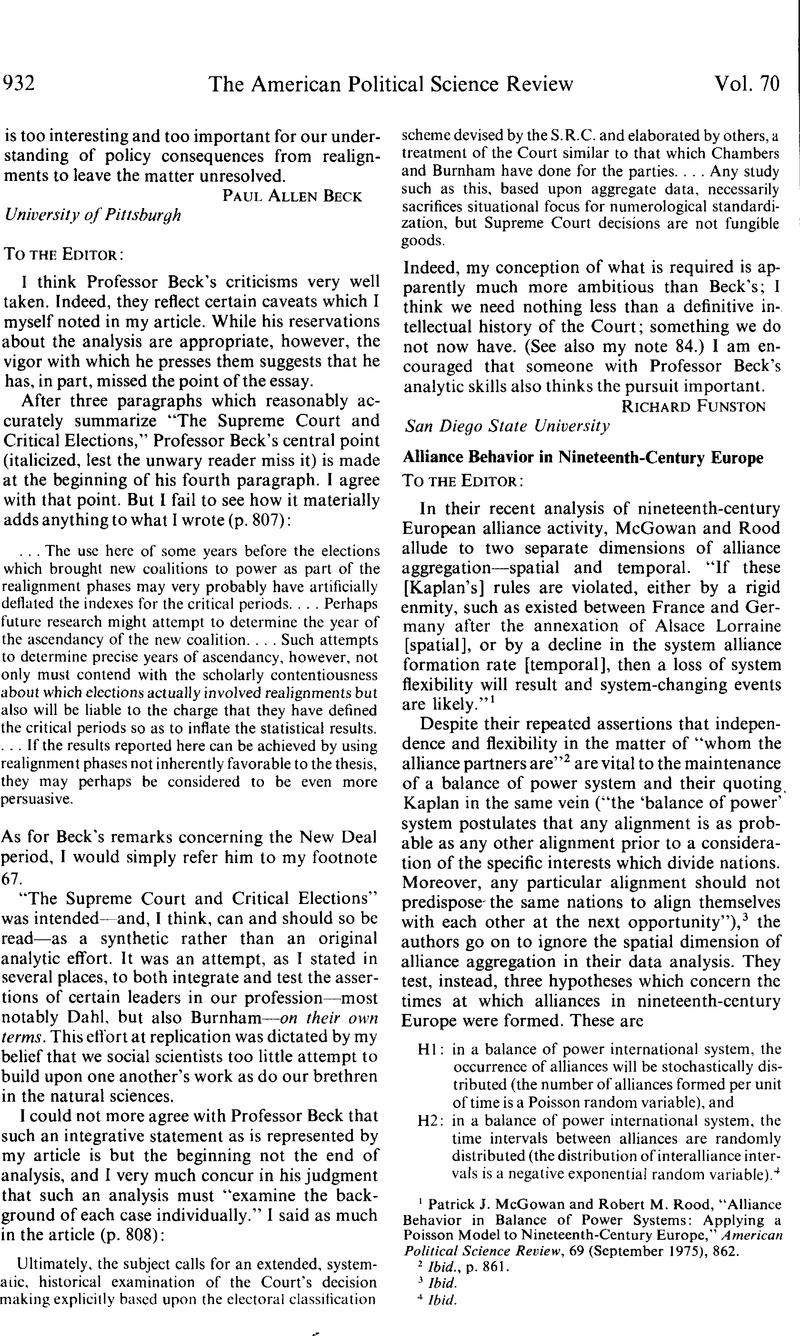Article contents
Alliance Behavior in Nineteenth-Century Europe
Published online by Cambridge University Press: 01 August 2014
Abstract

- Type
- Communications
- Information
- Copyright
- Copyright © American Political Science Association 1976
References
1 McGowan, Patrick J. and Rood, Robert M., “Alliance Behavior in Balance of Power Systems: Applying a Poisson Model to Nineteenth-Century Europe,” American Political Science Review, 69 (September 1975), 862CrossRefGoogle Scholar.
2 Ibid., p. 861.
3 Ibid.
4 Ibid.
5 McGowan and Rood, p. 862.
6 Gulick, Edward Vose, Europe's Classical Balance of Power (New York: Norton, 1967), p. 68Google Scholar.
7 Rosecrance, Richard N., Action and Reaction in World Politics (Boston: Little, Brown, 1963), p. 28Google Scholar.
8 Zinnes, Dina A., “An Analytical Study of the Balance of Power Theories,” Journal of Peace Research 4 (1967), 273CrossRefGoogle Scholar.
9 Spykman, Nicholas, America's Strategy in World Politics (New York: Harcourt, Brace, 1942), p. 103Google Scholar.
10 Arthur L. Stinchcombe's ideas concerning theory testing should be apparent here, if only in some twisted form. See especially his Constructing Social Theories (New York: Harcourt, Brace and World, 1968)Google Scholar.
11 If the grand coalitions which were formed just after the Congress of Vienna are dropped from the McGowan and Rood data set, then the general bipolarity of the European state system during the remainder of the nineteenth century becomes considerably more evident. With an hypothesis of randomness expecting identical frequencies of 5.3 for each bilateral combination, the following frequencies are actually observed:

12 For a very precise delimitation of the two levels of international political analysis, see Moul, William B., “The Level of Analysis Problem Revisited,” Canadian Journal of Political Science 6 (September 1973), 494–513CrossRefGoogle Scholar.
13 Kaplan, Morton A., System and Process in International Politics (New York: Wiley, 1957), pp. 27, 125Google Scholar.
- 2
- Cited by



Comments
No Comments have been published for this article.